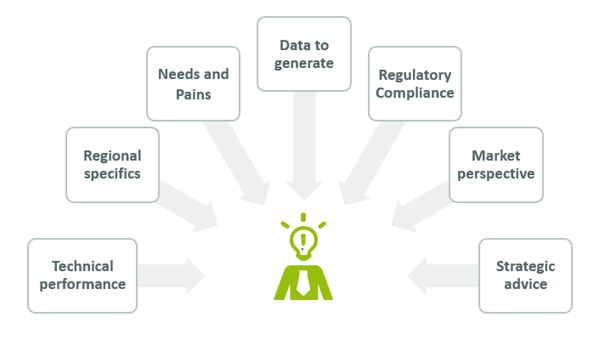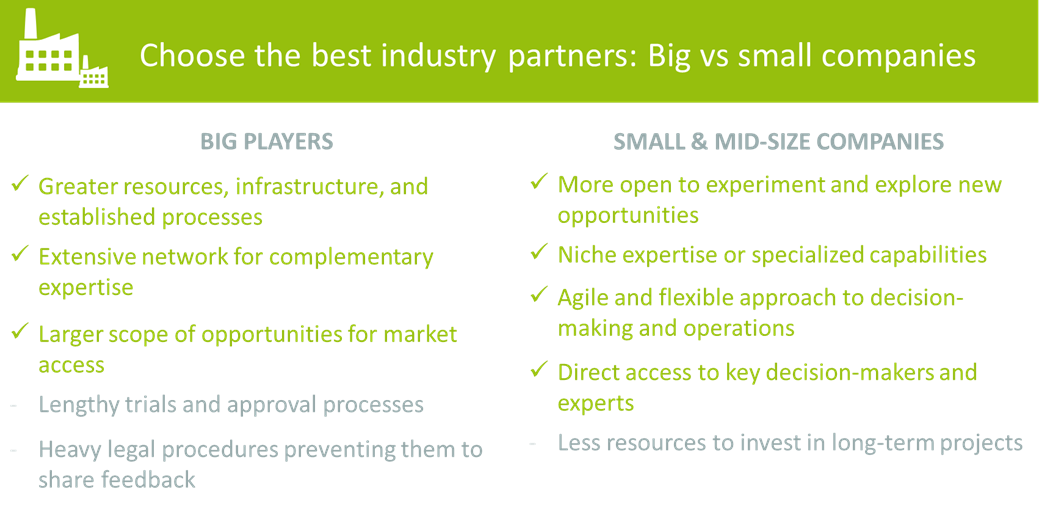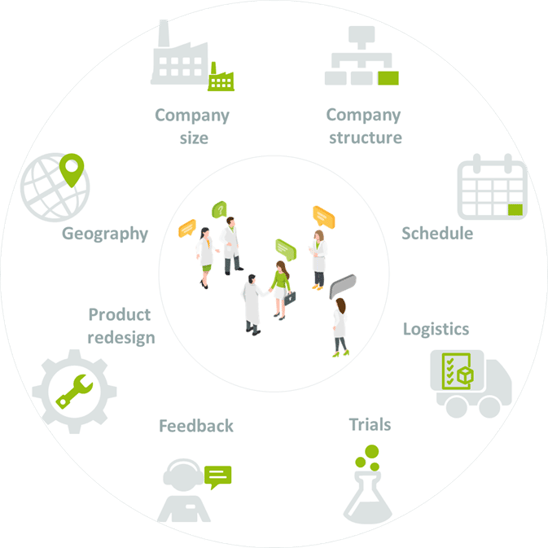1. Start early (the earlier the better)
Start looking for partner companies very early in your product development, even if you still have a lot of work to do or not enough technical data.
Choosing a good partner implies research and analysis – what type of company, application and testing capabilities, location, logistics…
And when you have made your choice, then you need to persuade them to work with you.
Engaging with the market early will allow you to validate your expectations, but also to identify and address potential risks before they become significant obstacles.
2. Get into the mindset to learn
You want to ultimately sell your product. Naturally, you might tend to consider the potential for collaboration beyond the initial testing phase.
This can lead to the wrong choice of partners.

At this point, you should focus primarily on gaining knowledge. You can extract so much information from collaborating with the right testing partners. For example:
- Key value attributes making your product unique or desirable
- Technical drawbacks and need to redesign it
- Differentiation vs benchmarks within the competitive context
- Needs to generate additional product data to convince future customers
- Information on costs and price acceptance
- Regulatory specifics for the targeted application areas
That is why, at SpecialChem we call them Learning Partners.
3. Enlarge your perspective: talk to different industry players
Consider collaborating with a large portion of companies. Do not chase only the “big fish”, but also small and mid-size organizations who could be as eager to innovate as you are.
Big corporations might provide a pathway to market access but can also be less open to experimentation and innovation.
Whereas small companies have proven to be valuable co-development partners because they can adapt more quickly to changing circumstances and can be more inclined to share feedback.

So, in order to have a wider array of customers’ technical and market insights and invest commercial resources only in market-validated opportunities, you need to receive feedback from different types of companies.
4. Broaden your reach: introduce your product to new audiences
Are you used to relying on your current customers to test your new products?
This cannot be the only channel you rely on. Working with a few customers might cut you off from large segments of the market and make you miss high-value insights.
On the contrary, by collaborating with new contacts you can gain knowledge that drives innovation and differentiate your product in the market space.
So, be sure to benefit from new and unbiased opinions.
|
DID YOU KNOW?
For 10+ years, SpeciaChem has been supporting material suppliers to connect with relevant industry partners in the applications areas of plastics, coatings, adhesives and sealants as well as cosmetics and personal care.
Our clients speak better than we do! Read our client cases and testimonials:
|
5. Follow-up closely with your industry partners
Your partners today may be your customers tomorrow.
- Show them you are committed to building a strong long-term collaboration. Provide samples, data, and support
- Be patient, trials and evaluations take time
- Listen carefully to what they have to say - your material might work great or not at all or might need some fine-tuning
- Follow-up regularly. Do not just send samples and wait for their feedback. Regular follow-ups make you understand your product behavior but also build trust and discuss other beneficial opportunities.


